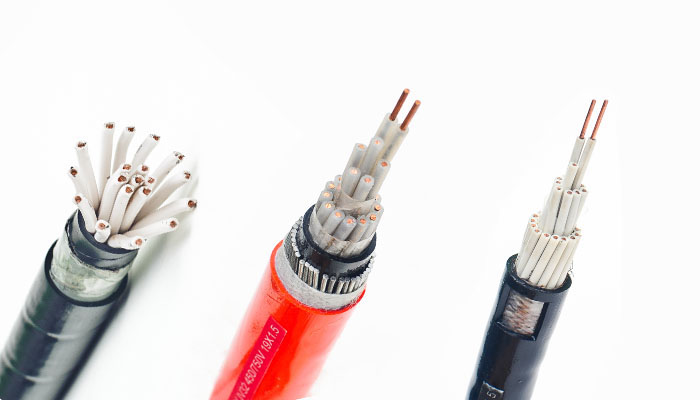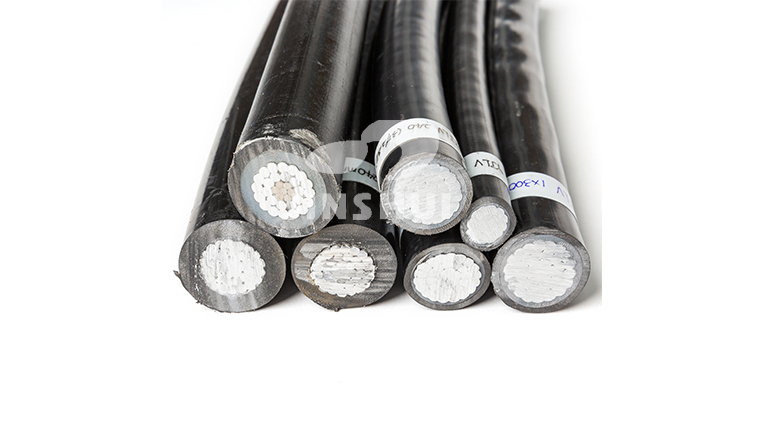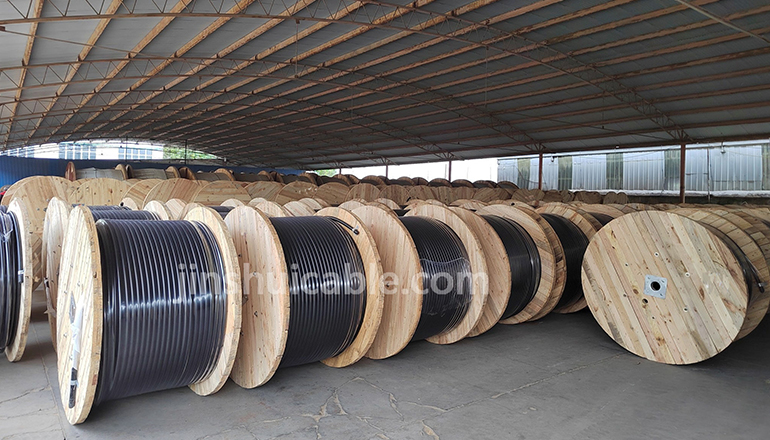- Offices Time:24 Hours Online
- Email:[email protected]
- WhatsApp:+8618339938759

Posted on March 24, 2023
AC cables and DC cables
Direct current (DC) and alternating current (AC) cables are used to transmit electrical power over long distances. The primary difference between DC and AC cables lies in the type of current that they carry.
Due to the nature of their respective currents, DC cables are typically used for applications that require a steady supply of power, such as batteries, electronic devices, and some motors. AC cables are used for applications that require a high voltage or the ability to transport power over long distances, such as power grids and electrical transmission lines.

If you don’t know about DC and AC cables, don’t worry! I will introduce them in detail for you.
what is DC cable?
DC (Direct Current) cable is a type of electrical cable used to transmit electrical power from one location to another in a DC electrical system. Unlike AC (Alternating Current) cables, which are designed to carry electrical power that alternates direction periodically, DC cables are designed to carry electrical power that flows in one direction continuously.
DC cables come in various sizes, shapes, and types, depending on their intended use, the amount of current they need to carry, and the voltage of the DC system. They can be made from a variety of materials, including copper, aluminum, and silver, and they may be insulated with materials such as PVC, rubber, or silicone to prevent electrical leakage or short-circuiting.
Common applications of DC cables include power distribution in automotive, marine, and aircraft systems, renewable energy systems such as solar panels and wind turbines, and telecommunications equipment.
what is AC cable?
An AC cable, or an alternating current cable, is a type of electrical cable that is designed to transmit electrical power from a power source to an electrical device. Alternating current (AC) is the type of electrical current that is used to power most electrical devices in homes and businesses.
AC cables typically have two or more conductors, which are made of copper or aluminum wires that are surrounded by insulation material. The insulation helps to protect the conductors from damage and also helps to prevent electrical shock. The conductors are usually twisted together or braided to help reduce interference from external sources.
AC cables come in different sizes and types, depending on the amount of power they are designed to carry and the specific application they are intended for. Some common types of AC cables include power cords for appliances, extension cords, and power cables for industrial equipment.
What are the main differences between AC cables and DC cables?
AC (alternating current) cables and DC (direct current) cables have some fundamental differences in their construction, function, and application. Here are some of the key differences between AC and DC cables:
1.Current Direction
The most significant difference between AC and DC cables is the direction in which the current flows. AC cables carry alternating current, which periodically reverses direction, while DC cables carry direct current, which flows in only one direction.
2.Insulation
AC cables require thicker insulation than DC cables because of the high voltage and rapidly changing current they carry. DC cables, on the other hand, require thinner insulation because the voltage and current are typically lower.
3.Conductors
AC cables usually have three conductors – live, neutral, and ground – whereas DC cables typically have two conductors – positive and negative.
4.Frequency
AC cables operate at a high frequency, typically 50 or 60 Hz, while DC cables operate at a constant frequency of 0 Hz.
5.Efficiency
AC cables are more efficient than DC cables for long-distance power transmission. DC cables are typically used for low voltage applications, such as batteries, electronic devices, and renewable energy systems.
6.Power Transmission
AC cables are used to transmit power over long distances, while DC cables are used for short-range power transmission, such as within a building or a vehicle.
7.Voltage Level
AC cables can carry high voltage levels, typically ranging from 110V to 240V, depending on the application. In contrast, DC cables operate at low voltage levels, often in the range of 12V to 48V.
8.Compatibility
AC cables are generally compatible with a wider range of devices than DC cables. Most electrical devices and appliances are designed to work with AC power, whereas DC power is typically used for specific applications such as charging batteries or powering electronic devices.
9.Safety
AC cables can be more dangerous than DC cables because they carry high voltages and can cause electric shocks if mishandled. However, DC cables can also be hazardous if the voltage is too high or if they are not properly insulated.
10.Cost
AC cables are generally more expensive than DC cables due to their more complex design and higher insulation requirements. However, the cost of the cable will depend on the specific application and the materials used.
| Cable Type | Current Direction | Insulation | Conductors | Frequency | Efficiency | Power Transmission | Voltage Level | Compatibility |
| AC cable | Transmission of alternating current that periodically reverses direction | Thick insulation layer | Have three conductors | Caculated Breaking Load(N) | 50 or 60 Hz | Long-distance power transmission | 110V to 240V | Electrical Equipment and Appliances |
| DC cable | Transmitting direct current that flows in only one direction | Thin insulating layer | Have two conductors | Caculated Breaking Load(N) | 0 Hz | Short distance power transmission | 12V to 48V | Charging batteries or powering electronic devices |
According to the above comparison, AC cables and DC cables are different in their construction, function, and application. The choice between AC and DC cables depends on the specific requirements of the application, including the voltage level, power transmission distance, and device compatibility. Understanding the differences between these two types of cables can help ensure that the appropriate cable is selected for the specific application, which can ultimately impact the safety, efficiency, and cost of the electrical system.
When using cables, should I choose AC or DC cables?
The choice between AC or DC cables depends on the type of electrical system being used.
For AC systems
Such as those used in household or industrial power systems, AC cables are typically used. AC cables are designed to handle the sinusoidal waveform of AC power and are typically rated in RMS (root mean square) values. AC cables are also designed to handle high voltage levels and are usually insulated to protect against electrical shock.
For DC systems
Such as those used in automotive, marine, or solar power systems, DC cables are typically used. DC cables are designed to handle the constant voltage levels of DC power and are rated in the direct current value. DC cables are also designed to handle high current levels and are usually larger in diameter than AC cables of the same current rating.
It is important to select the correct type of cable for your application, as using the wrong type of cable can lead to equipment damage, power loss, or even electrical shock. It is recommended to consult with a qualified electrical engineer or technician to ensure that the proper cables are selected for your specific application.
Post categories
Most Popular Posts
-
The 135th China Canton Fair
March 20, 2024 -
What are the laying methods of copper core wires and cables?
January 9, 2024 -
What are the advantages of aluminum conductor cables?
December 14, 2023 -
Characteristics of high temperature wires and cables
December 7, 2023





